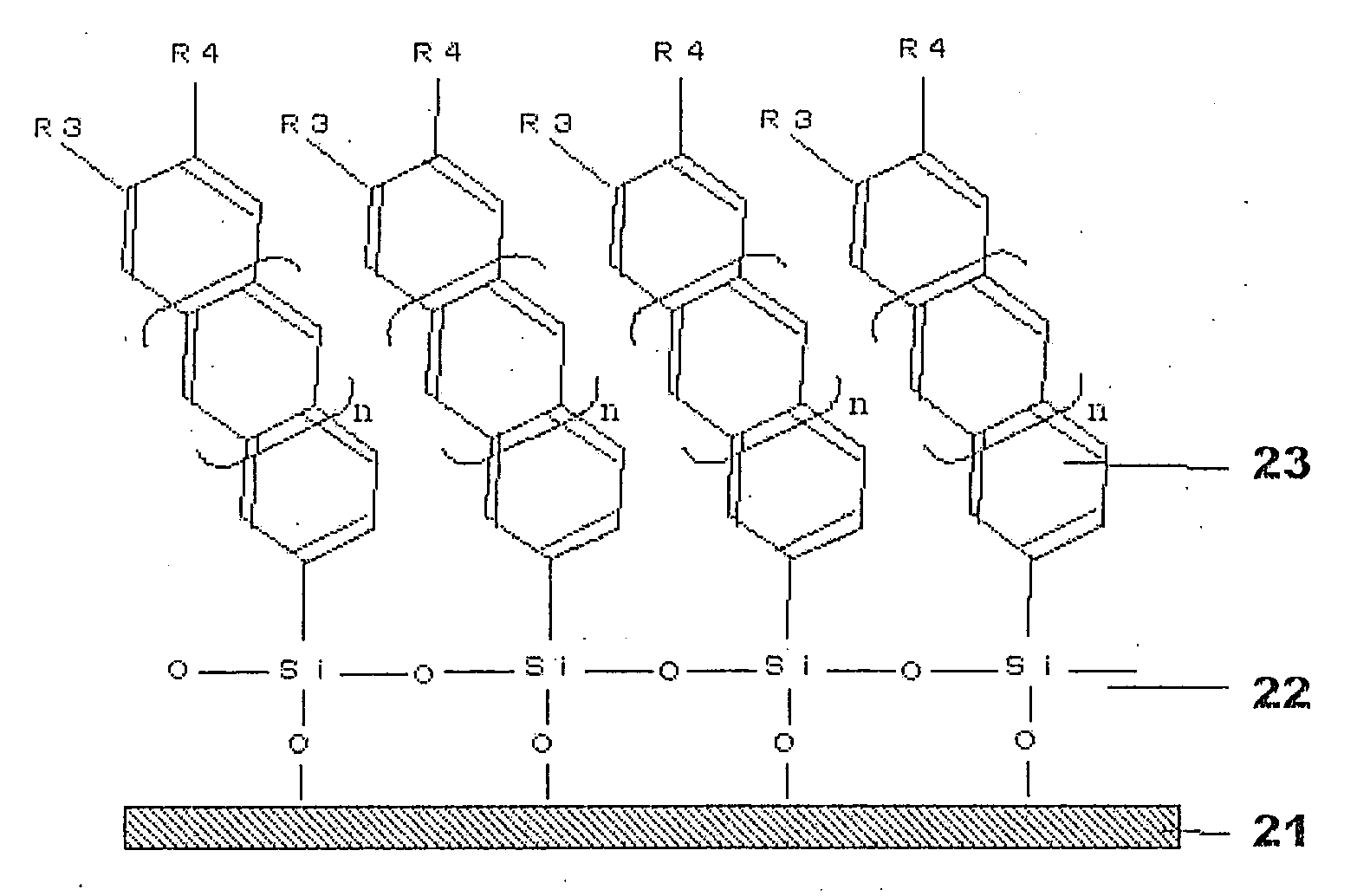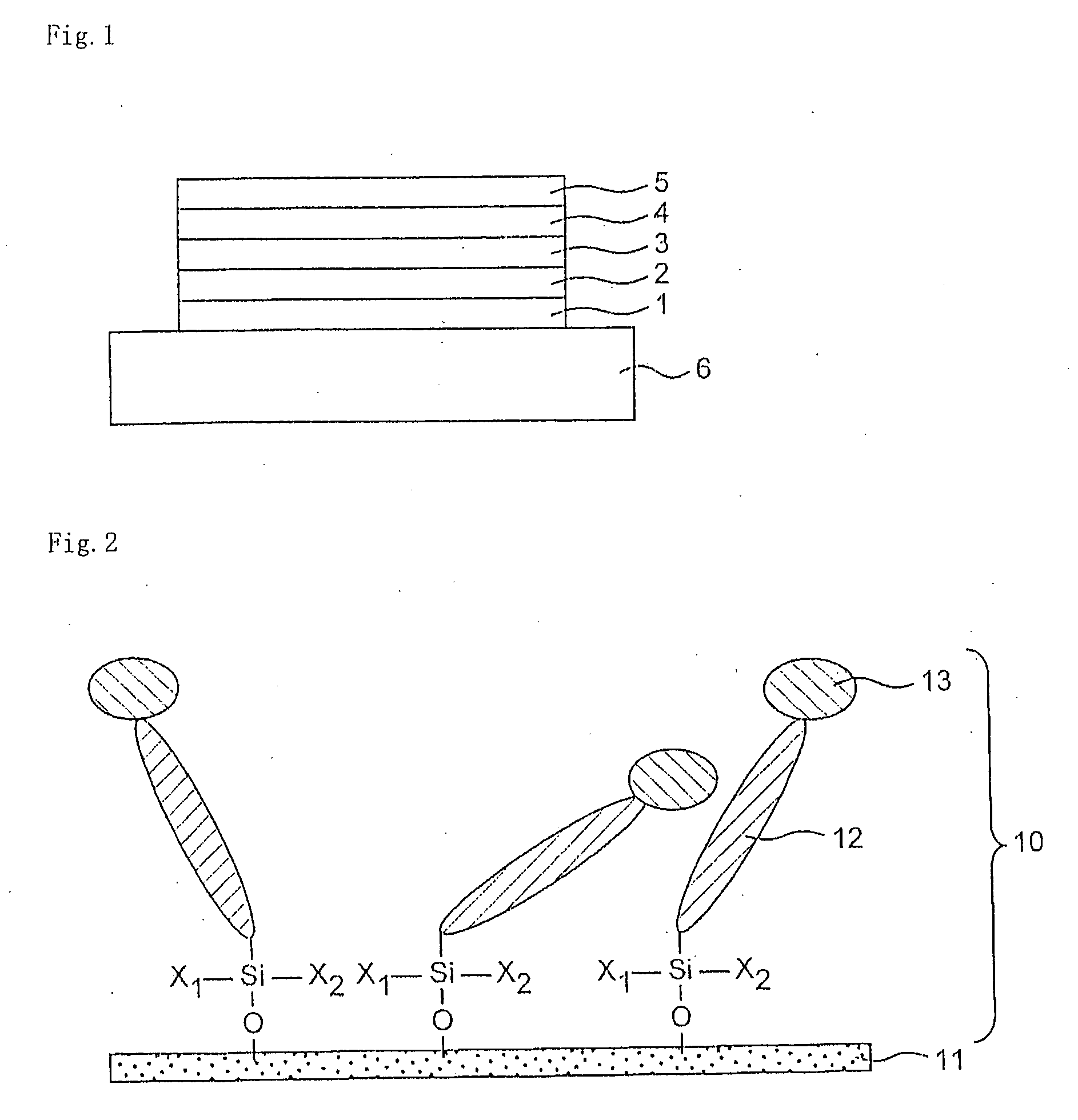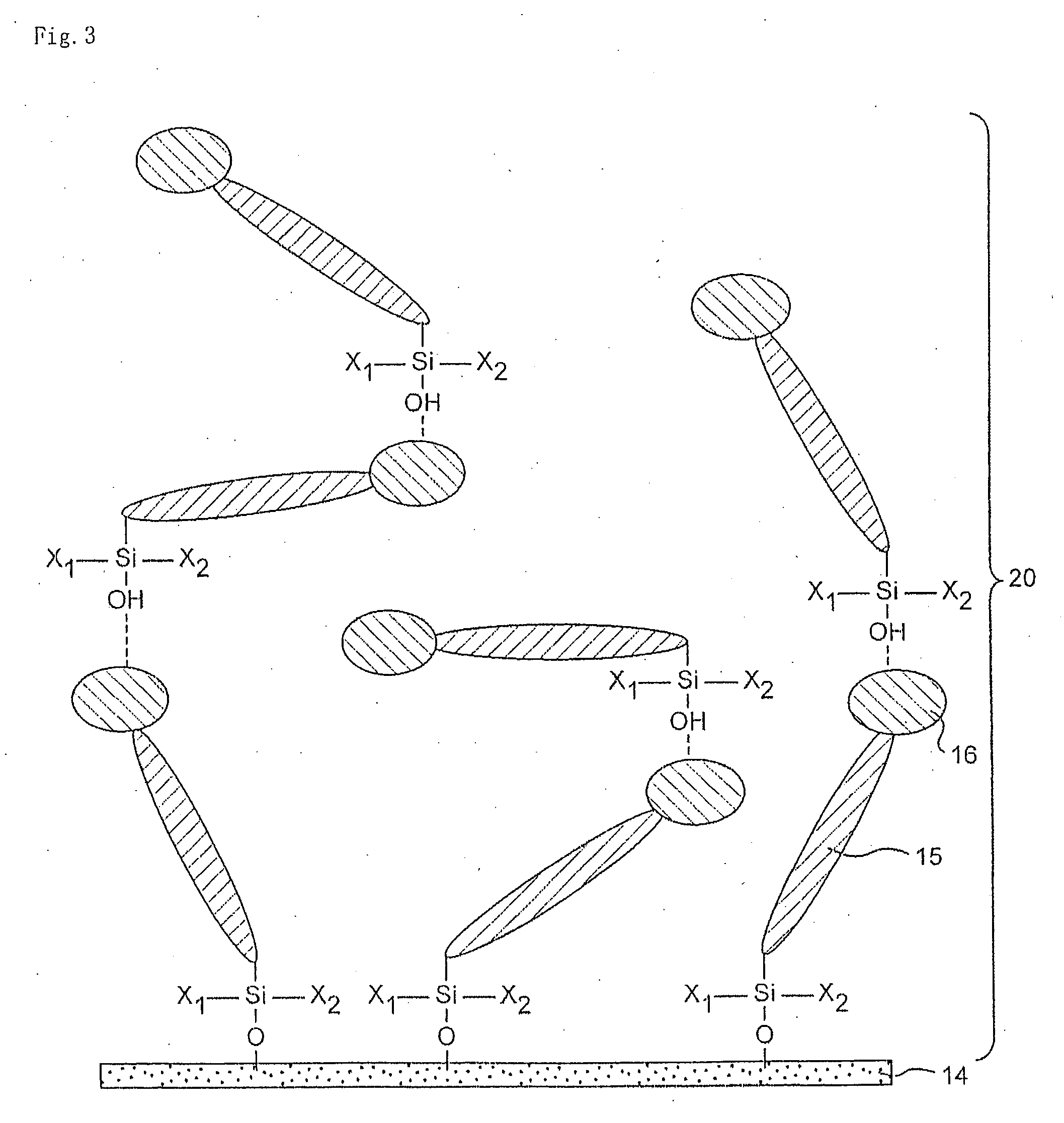Organosilanes, Process For Production of the Same, and Use Thereof
a technology of organic silane and process, applied in the field of organic silane compound, can solve the problems of troublesome process and small film strength, and achieve the effects of high stability and durability, physical peeling of the resulting organic thin film, and high stability and durability
- Summary
- Abstract
- Description
- Claims
- Application Information
AI Technical Summary
Benefits of technology
Problems solved by technology
Method used
Image
Examples
example 1
Synthesis of Organic Silane Compound Represented by the Structural Formula (A)
[0271]First, 100 mM NBS and AIBS were added to a carbon tetrachloride solution containing 50 mM 2-bromonaphthalene (CAS no. 90-11-9), and this was reacted at 60° C. for 2 hours under the N2 atmosphere to synthesize 2,6-dibromonaphthalene. Subsequently, 40 mM 2-bromonaphthalene was dissolved in THF, a metal magnesium was added, this was reacted at 60° C. for 1 hour under the N2 atmosphere to synthesize a Grignard reagent, the Grignard reagent was added to the THF solution containing 20 mM 2,6-dibromonaphthalene, and this was reacted at 20° C. for 9 hours to synthesize [2,2′;6′,2″]ternaphthalene. Thereafter, 20 mM NBS and AIBM were added to a carbon tetrachloride solution containing 10 mM [2,2′;6′,2″]ternaphthalene, this was reacted at 60° C. for 2 hours under the N2 atmosphere to form 6-bromo-[2,2′;6′,2″]ternaphthalene, a metal magnesium was added, this was reacted at 60° C. for 1 hour under the N2 atmosphe...
preparation example 1
Synthesis of 2-bromopentacene
[0281]2-Bromopentacene to be used in Example 2 was synthesized by the following procedure. First, 100 mM pentacene and NBS dissolved in 50 mL of carbon tetrachloride were added to a 100 ml egg plant flask equipped with a stirrer, a refluxing condenser, a thermometer, and an addition funnel, the mixture was reacted for 1.5 hours in the presence of AIBN. Unreacted materials and HBr were removed by filtration, and an accumulated material in which only one place was brominated was taken out using column chromatography to obtain the title 2-bromopentacene.
example 2
Synthesis of Organic Silane Compound Represented by the Structural Formula (B)
[0282]First, 50 mM 2,7-dibromofluorene (CASNO. 16433-88-8) was dissolved in a TI-IF solution, a metal magnesium was added, and this was reacted at 60° C. for 8 hours to form the following Grignard reagent 1.
[0283]Subsequently, the Grignard reagent 1 was added to a THF solution containing 25 mM 2-bromopentacene formed in Preparation Example 1, and this was reacted at 20° C. for 2 hours to form the following Grignard reagent 2.
[0284]Further, 25 mM 2-bromofluorene (CASNO. 1133-80-8) was added, and this was reacted at 20° C. for 3 hours to synthesize 7-pentacene-2-yl-9H,9′H-[2,2′]bifluorenyl. Thereafter, a metal magnesium was added, this was reacted at 60° C. for 1 hour under the N2 atmosphere to synthesize the following Grignard reagent 3 and, further, 10 mM chlorotrimethoxysilane was added, and this was reacted at 60° C. for 2 hours to obtain the title compound at a yield of 25%.
[0285]Regarding the resulting...
PUM
| Property | Measurement | Unit |
|---|---|---|
| carbon number | aaaaa | aaaaa |
| carbon number | aaaaa | aaaaa |
| carbon number | aaaaa | aaaaa |
Abstract
Description
Claims
Application Information
 Login to View More
Login to View More - R&D
- Intellectual Property
- Life Sciences
- Materials
- Tech Scout
- Unparalleled Data Quality
- Higher Quality Content
- 60% Fewer Hallucinations
Browse by: Latest US Patents, China's latest patents, Technical Efficacy Thesaurus, Application Domain, Technology Topic, Popular Technical Reports.
© 2025 PatSnap. All rights reserved.Legal|Privacy policy|Modern Slavery Act Transparency Statement|Sitemap|About US| Contact US: help@patsnap.com



